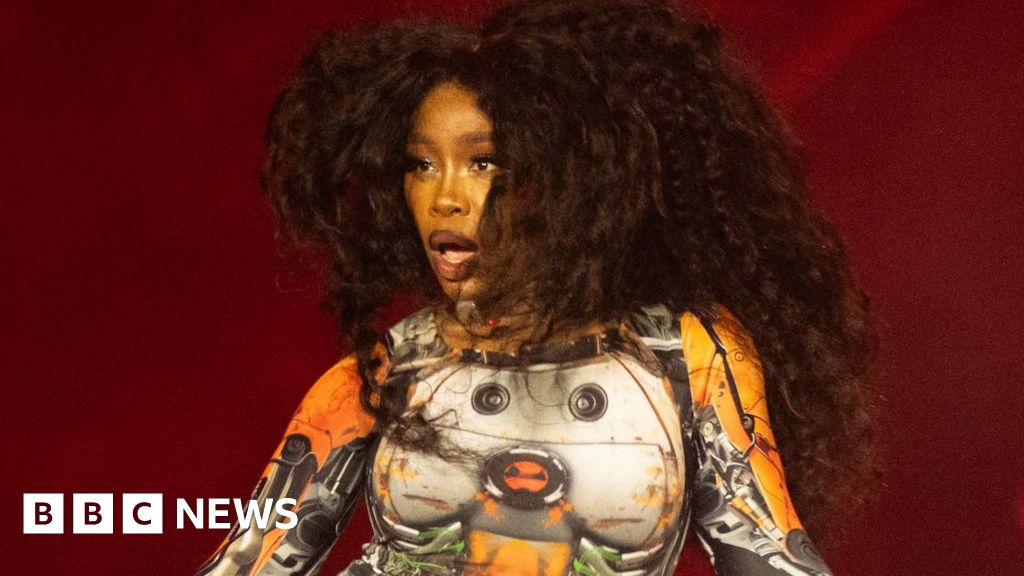ARTICLE AD BOX
By Steffan Powell
Gaming reporter
Image source, 343 INDUSTRIES
A hulking seven foot alien with rippling muscles, sharp pointed teeth and red eyes stands alone.
Bright blue explosions of energy suddenly fill the screen, a klaxon starts to wail and warning signs flash before your bronzed visor.
You spring into action, leaping across a picturesque green valley to get close, firing a volley of bullets as you go.
The brute lashes out, but you've struck first and he falls.
More explosions all around, his friends know you're here - you reload, ready to go again.
For 20 years, that loop of gameplay has made the Halo franchise one of the most popular in gaming.
Image source, 343 INDUSTRIES
Image caption,Halo: Infinite is offering part of its experience for free to try and compete with games like Fortnite and Warzone
In an industry that moves fast, however, the series has a lot of catching-up to do to be as relevant today as it has been in the past. Halo: Infinite is the latest entry and comes six years after its predecessor, but the stakes are now much higher.
A new generation of consoles have been released and industry analysts suggest Microsoft are behind their rivals Sony and Nintendo in terms of sales. If this game fails to make an impact with audiences - the gap might never close.
Games have changed dramatically since 2015 with free-to-play titles like Fortnite and Warzone dominating the market - Halo is a series that came to prominence in a very different era, developers can't be sure that the game's fundamental premise still works in 2021.
'A new audience'
Bonnie Ross, head of the game's developer 343 Industries knows competition is fierce and hopes the team "hit the right balance" when it comes to its design.
"We really wanted to make sure that we gave a nod to the fans that love Halo, while also taking it forward to a new audience," she explains.
The title has been broadly well received by critics. "Without offering too much that other online shooters don't, Infinite packages its games slickly and appealingly," said The Independent's Louis Chilton.
"It wisely avoids messing too much with the fundamentals. There's a good array of weapons to choose from without feeling overwhelmed, and a nice sense of variety to the combat."
However, Sam Machkovech of Ars Technica described it as "the messiest Halo game yet", adding: "Halo Infinite may reach new series heights, but its ambition tests the limits of the duct tape keeping the game together."
The attempt to keep traditional fans and new ones happy has conflicted some who're unsure of the game's blend of open-world exploring and linear story telling.
Image source, 343 INDUSTRIES
Image caption,Master Chief, the iconic main character of the Halo franchise, returns
As well as broadening the traditional premise of a Halo story, the development team have made portions of it free and playable on more devices.
Making it all work has been a challenge, according to Bonnie. "I would say it was a learning journey and a lot more challenging than we thought," she says. "We just don't have that muscle memory, because we have been exclusive to consoles for so long."
For Joseph Staten, head of creative on Halo: Infinite, the changes were all about "widening the audience as much as possible" and using the success of other games as a blueprint.
He explains: "Going free-to-play is about getting the game into players hands with a low barrier and a low cost of entry. I would say one of the biggest challenges we had on the team was on the campaign side, where we took the classic Halo, linear mission based formula and mixed it up a little bit."
To experience the story campaign gamers will have to pay to play. It sits alongside the online multiplayer option that now costs nothing.
Bonnie says they had to "think differently" and try to meet the players on the devices they're using - rather than rely solely on a premium offering that people had to buy.
The fundamental gameplay of Halo hasn't changed that drastically since its inception in 2001, even if the way players can access the franchise now has.
The question is whether Bonnie and Joseph's team have done enough to persuade gamers to turn off their Battle Royale games, with their giant maps and over 100 players, for the smaller more intimate online action that Halo offers.
By not changing the basic premise of the game, developers are betting that this type of experience won't be considered as old fashioned and outdated.
Image source, 343 INDUSTRIES
Image caption,The series success has played an important part in the story of Xbox over the past 20 years
As an exclusive Xbox franchise, Halo and its main character, Master Chief, have become synonymous with Microsoft's console. For many people it has been seen as a system seller - a reason to buy one console over another.
With Microsoft's latest machines, The Xbox Series X and S, reportedly being outsold by Sony's PlayStation 5 this is an important moment for both the franchise and Xbox itself.
The success of one helps the other ("I'm not sure you can separate them," Bonnie says), and Microsoft bosses are hoping this release will encourage more people to choose their next generation machines.
Fail to do that and Microsoft could once again be looking at a generation of consoles that are unable to compete with its rivals in terms of sales and popularity.
Originally Halo: Infinite was due to be released last year, on the same day as the Xbox Series X and S, but the game was delayed - so the pressure is on to make up for lost time.
Bonnie says it was "disappointing" not to be able to deliver last year but "the game was simply not ready".
"It's an ambitious game, it wasn't right to ship it, we needed more time," she adds.
For fans of the series the last 12 months have been a long wait to finally get their hands on the game and experience Master Chief's latest adventures.
For bosses at Microsoft the last 12 months have a long wait to see if this version of Halo can help them catch-up with the competition.

 2 years ago
114
2 years ago
114








 English (US)
English (US)